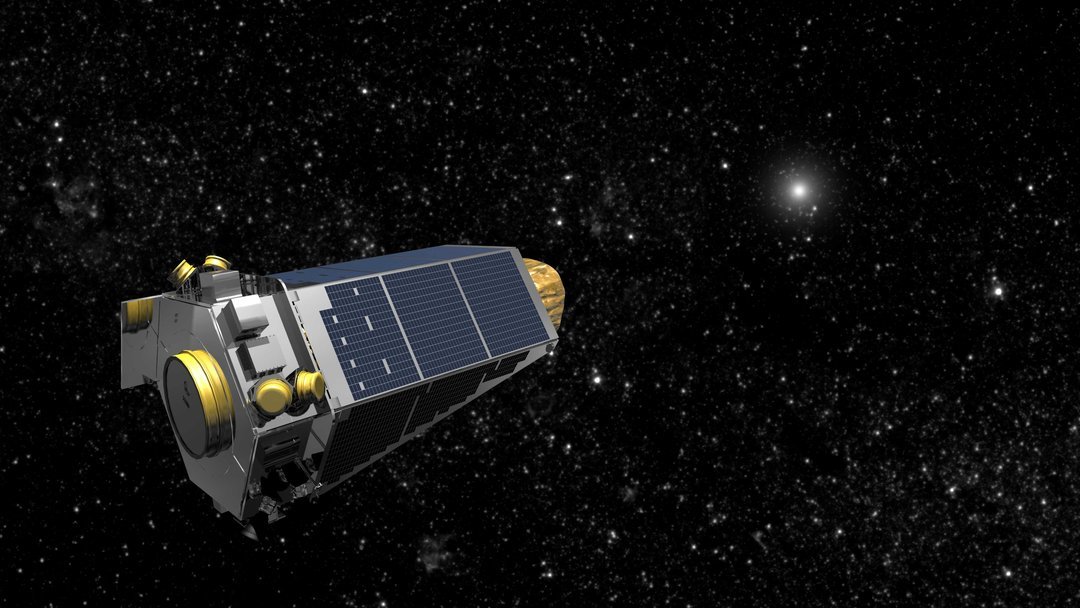The Kepler telescope runs out of fuel. The final is near

The Kepler Space Telescope gave scientists a lot - it sent a huge number of photographs and telemetry data to Earth. Kepler helped discover exoplanets, and not one and not two, but thousands. The device is located at a distance of about 140 million kilometers from Earth. This year marks nine years of the telescope's stay in space, and, unfortunately, the reserves of fuel necessary for the correct positioning of the device in space are not infinite - it is running out . The end will come soon - just a few months.
This is a very serious problem, although not the only one; several serious technical failures have happened in the past. In 2013, the telescope failed another flywheel , which reduced the system's ability to orient in space. Then the scientists, once again entering a session with the device, found that he had switched to safe mode because of problems with guidance. The device was oriented with solar panels towards the Sun and rotated slightly around its axis.
5 years ago, Kepler had to spend a large amount of jet fuel. Somewhat later, scientists managed to find a way out of the situation and make the device again suitable for observing the depths of outer space. Moreover, the mission was designed for completion at the end of 2012, after which it was decided to extend it for another 4 years, and then - more.
')
In 2012, one of the managers of the scientific program of the Kepler telescope stated: “The specificity of Kepler’s work is such that he constantly sends new information. We have a huge set of data that is yet to be analyzed. Therefore, we expect that the flow of discoveries from the telescope in the coming years will not run dry. ” And the scientist was absolutely right - the device sent so much data that it would be enough for many more years of study.
From the beginning, he discovered 2245 exoplanets and more than two thousand candidates for exoplanets that are yet to be verified. Perhaps the device will be able to make many more interesting discoveries, but due to the lack of fuel the system cannot be fully used. After a flywheel failure, scientists were able to find a way out, and made it so that Kepler began changing the field of vision every three months. The telescope could not “look” at the same place as long as it was necessary for the scientist.
The new mission received the name K2, "Kepler" taught to navigate the pressure of sunlight, which breathed new life into the apparatus, so to speak. From the very beginning of the start of K2, experts suggested that no more than ten cycles of observation could be carried out. But the estimates of the experts turned out to be quite conservative, and the device worked much longer.
Currently, the 17th observation cycle is already underway. Work will continue for as long as fuel reserves allow. It is necessary to enable the orientation of the telescope in space. But the problem is that it is unclear how much fuel based on hydrazine remains in the tanks. Initially, the fuel was almost 12 kg with the mass of the device itself in 1052 kg.

In fact, the fuel can run out at any time, and refuel will not work - there are no gas stations nearby. To operate the system until the very end, the project team is assembled because at any time another discovery can be made. “No one knows what discoveries can be made in the course of studying the last data packet transmitted to Earth,” the project representative said.
Kepler has a substitute - this is the scientific mission of TESS (Transiting Exoplanet Survey Satellite). This telescope is planned to be sent from Earth into space in April of this year. The rocket with a telescope starts on April 16th. Studying TESS will be the brightest stars that are no further than 300 light-years from Earth. They will be studied in order to detect stony exoplanets that fall into the habitable zone. It is planned to survey about 500 thousand stars of spectral classes G, M, R brighter than 12 magnitude. In addition, 1000 nearest red dwarfs, which are scattered throughout the starry sky, will be studied.
Scientists expect that they will be able to detect several thousand transit exoplanets the size of the Earth and an orbital period of up to 2 months. Further, these objects will continue to be studied with the ESPRESSO spectrometer on the VLT, as well as with the help of the James Webb telescope.
Source: https://habr.com/ru/post/411095/
All Articles